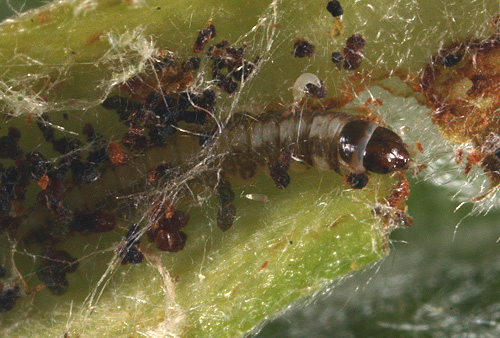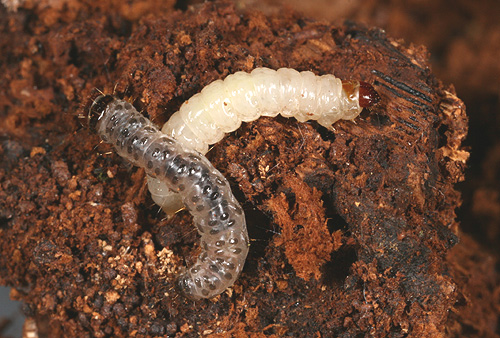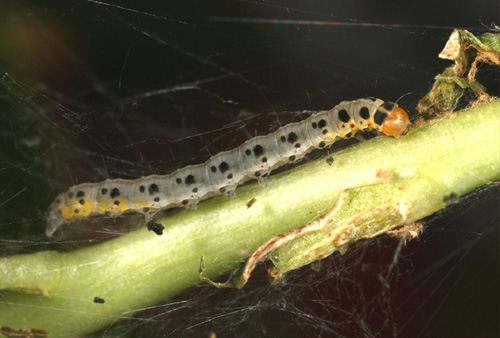|
|
Projecten » Microlepidoptera larvae
|
|
|
| |
| |
Knowledge of microlepidoptera larvae ("rupsenproject")
Information
A way to get grip on the detailed information about caterpillars and early stages of the smaller moths (Microlepidoptera)

Batrachedra praeangusta Haworth, a species living in the willow catkins and protecting shields of these, later spinning young leaves together. Photography: Tymo Muus.
Introduction
Since the 2003's my colleague Sifra Corver and I reared many species of macrolepidoptera. I think we together bred up to 30% of the total species occuring in The Netherlands. When we started the website project Microlepidoptera.nl, to provide more information about the smaller and 'more difficult' species of moths, it became clear that the biology of many species was little-known and underinvestigated. Although we reared several species, like I mainly searched for species living on mosses, such as Scopariinae. In the early spring it was the right time to open some bracket fungus and dead wood to search for Oecophoridae and Tineidae. I received several material of species from other colleagues.
In particular I pay attention on the oviposition location, to observe species in the wild and when females are put into breeding jars. It is often that eggs are laid on one special place, like a green shoot, but in other cases species are tending to choose other locations and then it is useful to watch which location is most cherished. In cool situations young larvae grow slowly and can be observed watched perfectly: so you can get an answer on the question how a small larva can enter a seed or twig and continue its way from that point. So, well, collecting and comparing information from own experiences and sources like literature can be grateful to get a better view on the life stages of species and how they behave in nature.
Chiefly the following points are important:
- the Dutch voltinism of species and its larvae (early stages)
- overwintering, how, and when are species getting active again in spring?
- ecology, type habitat, condition of hostplants
- what are the most chosen hostplants in The Netherlands? Testing continental hostplants, are there mistakes in it?
e.g. according to the literature Ptycholomoides aeriferana Herrich-Schäffer was reared from Larix sp. and Betula sp., because both plants are extremely different, when breeding it came clear that larvae do not like Betula at all, so this statement is incorrect.
- comparing larval descriptions included chaetotaxy, redescription of several species - deviding descriptions of characteristics into young, fullgrown and praepupal stages.
- morphological differences between larvae of species out of one genus or subfamily, like species on Juniperus sp., Cirsium sp. or Brassica sp., so larvae can be recognized more easily.

Two species of the bracket fungus Fomes fomentarius, both belonging to the subfamily of the Tineidae, Nemapogoninae, but extremely different; on the left Triaxomera parasitella Hübner, on the right Archinemapogon yildizae Koçak (not in The Netherlands). Photography: Tymo Muus.
How can yóu help?
There are three ways to help me with descriptions of larvae.
- Sending digital copies of publications with descriptions of early species; like articles as in Entomologists Record and Journal of Variation.
- Sending me a description of rearing experiences and pictures of larvae.
- Sending me living material: eggs, larvae or pupae of male and female specimens for breeding.
I thank you for your help and coorporation!
Please contact me for more information: microlepidoptera@gmail.com.

A ermine moth species, Yponomeuta sedella Treitschke, living on Sedum sp. Photography: Tymo Muus. |
|
| |
|
|
|
|
|